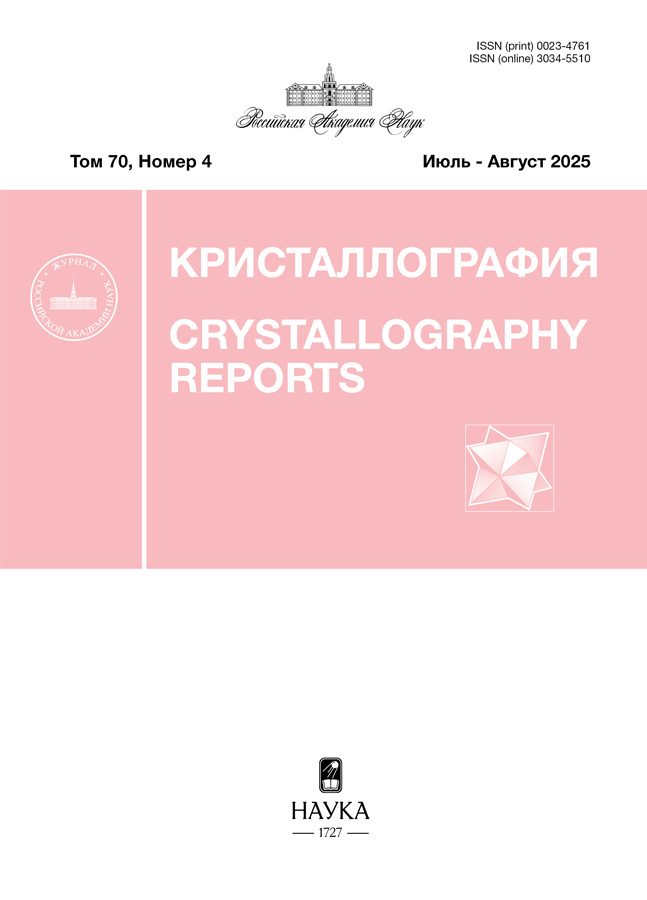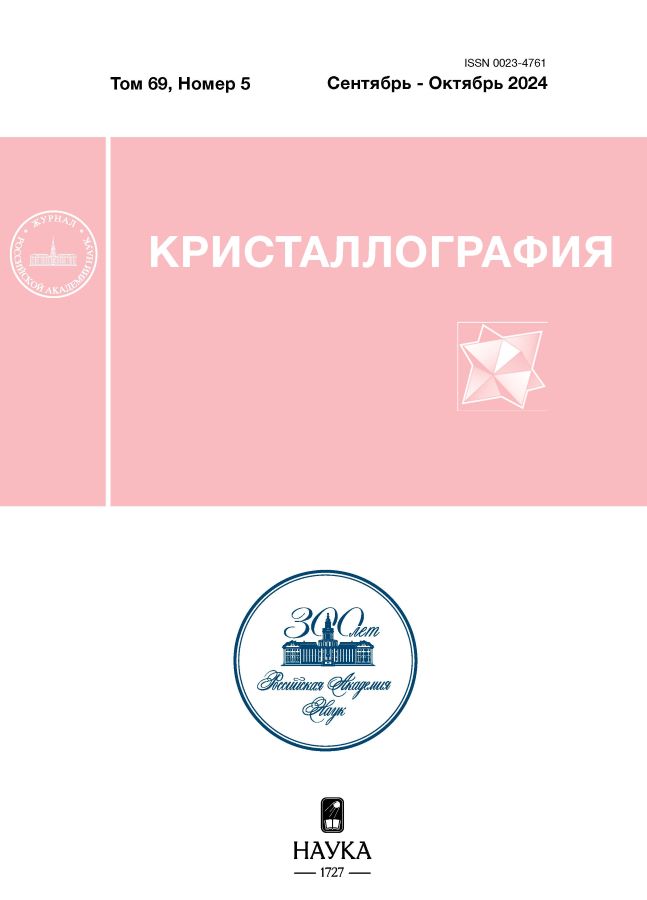Процесс сверхглубокого проникания высокоскоростных металлических частиц в твердое тело
- Авторы: Никитин А.И.1, Никитин В.А.1, Величко А.М.1, Никитина Т.Ф.1
-
Учреждения:
- Институт энергетических проблем химической физики им. В.Л. Тальрозе Федерального исследовательского центра химической физики им. Н.Н. Семёнова РАН
- Выпуск: Том 69, № 5 (2024)
- Страницы: 811-820
- Раздел: ДИНАМИКА РЕШЕТКИ И ФАЗОВЫЕ ПЕРЕХОДЫ
- URL: https://ter-arkhiv.ru/0023-4761/article/view/673716
- DOI: https://doi.org/10.31857/S0023476124050071
- EDN: https://elibrary.ru/ZDEOYH
- ID: 673716
Цитировать
Полный текст
Аннотация
Объясняются эффекты, возникающие при столкновении с твердой мишенью потока металлических частиц размером 10–100 мкм, движущихся со скоростью 1–3 км/с. Сделано предположение, что в момент удара о мишень частица теряет часть электронов и в течение некоторого времени благодаря наличию окисной оболочки удерживает на себе положительный заряд. Поток электронов, проходящий по мишени в момент удара, генерирует импульс электромагнитного поля. Частица, обладающая зарядом ~10–9 Кл, внедрившись внутрь твердой мишени, давит на стенку канала с силой ~500 МПа и движется в нем под действием сил, вызванных поляризацией вещества мишени. Комбинация высокого давления и смещения приводит к существенному снижению силы трения частицы о стенку. Предложенная гипотеза в случае своего подтверждения может помочь найти способы защиты электронных приборов космических аппаратов от ударов потоков быстрых пылевых частиц.
Полный текст
Об авторах
А. И. Никитин
Институт энергетических проблем химической физики им. В.Л. Тальрозе Федерального исследовательского центра химической физики им. Н.Н. Семёнова РАН
Автор, ответственный за переписку.
Email: nikitin@chph.ras.ru
Россия, Москва
В. А. Никитин
Институт энергетических проблем химической физики им. В.Л. Тальрозе Федерального исследовательского центра химической физики им. Н.Н. Семёнова РАН
Email: nikitin@chph.ras.ru
Россия, Москва
А. М. Величко
Институт энергетических проблем химической физики им. В.Л. Тальрозе Федерального исследовательского центра химической физики им. Н.Н. Семёнова РАН
Email: nikitin@chph.ras.ru
Россия, Москва
Т. Ф. Никитина
Институт энергетических проблем химической физики им. В.Л. Тальрозе Федерального исследовательского центра химической физики им. Н.Н. Семёнова РАН
Email: nikitin@chph.ras.ru
Россия, Москва
Список литературы
- Ушеренко С.М. Сверхглубокое проникание частиц в преграды и создание композиционных материалов. Минск: Изд-во НИИ импульсных процессов, 1998. 210 c.
- Ушеренко С.М., Овчинников В.И., Коваль О.И., Зиолкович С. // Вестник Полоцкого государственного университета. Сер. 2. Прикладные науки. Упрочнение деталей. 2003. Т. 2. № 4. С. 189.
- Белоус А.И., Солодуха В.А., Шведов С.В. Космическая электроника. В 2-х книгах. Книга 2. М.: Техносфера, 2015.
- Ганигин С.Ю., Калашников В.В., Журавлёв А.Н. и др. // Известия Самарского научного центра РАН. 2012. Т. 14. № 1 (2). С. 537.
- Соболев В.В., Ушеренко С.М. // Физика и техника высоких давлений. 2005. Т. 15. № 2. С. 86.
- Sobolev V.V., Usherenko S.M. // J. Physique. 2006. V. IV. № 134. Р. 977.
- Марукович Е.И., Ушеренко Ю.С. // Литейное производство. Литье и металлургия. 2012. Т. 4. № 88. С. 120.
- Симоненко В.А., Скоркин Н.А., Башуров В.В. // Физика горения и взрыва. 1991. № 4. С. 46.
- Роман О.В., Андилевко С.К., Карпенко С.С. и др. // Инженерно-физический журнал. 2002. Т. 75. № 4. С. 187.
- Баскевич А.С. // Вiстi Донецького гiрничого iнстiтуту. 2017. Т. 2. № 4. С. 182.
- Трофимов В.С., Петров Е.В., Алымов М.И. // Вестник Тамбовского университета. Сер. Естественные и технические науки. Физика. 2016. Т. 21. № 3. С. 1365.
- Альтшулер Л.В., Андилевко С.К., Романов Г.С. и др. // Письма в ЖТФ. 1989. Т. 15. № 5. С. 55.
- Андилевко С.К., Романов Г.С., Ушеренко С.М. и др. // Письма в ЖТФ. 1990. Т. 16. № 22. С. 42.
- Чёрный Г.Г. // Докл. АН СССР. 1987. Т. 292. № 6. С. 1324.
- Григорян С.С. // Докл. АН СССР. 1987. Т. 292. № 6. С. 1319.
- Matsumoto T. // Proc. 5th International Symposium on Ball Lightning (ISBL97). Tsugawa-Town, Niigata, Japan, 1997. P. 193.
- Уруцкоев Л.И., Ликсонов В.И., Циноев В.Г. // Прикладная физика. 2000. № 4. С. 83.
- Жигалов В.А. // РЭНСИТ: Радиоэлектроника. Наносистемы. Информационные технологии. 2021. Т. 13. № 3. С. 329. https://doi.org/10.17725/rensit.2021.13.329
- Fredericks K.A. Possible detection of tachyon monopoles in photographic emulsions. June 7, 2013. https://www.researchgate.net/publication/289165518
- Ивойлов Н.Г. // Георесурсы. 2005. Т. 2. № 17. С. 84.
- Богданович Б.Ю., Волков Н.В., Косточко Ю.П. и др. // Инженерная физика. М.: МИФИ, 2000. № 1. С. 19.
- Нестерович А.В., Фетисов Г.П. // Инженерная физика. М.: МИФИ, 2007. № 5. С. 7.
- Nikitin A.I., Nikitin V.A., Velichko A.M. et al. // J. Atm. Solar-Terr. Phys. 2021. V. 218. P. 105525. https://doi.org/10.1016/j.jastp.2020.105525
- Никитин А.И., Никитин В.А., Величко А.М. и др. // РЭНСИТ: Радиоэлектроника. Наносистемы. Информационные технологии. 2021. Т. 13. № 3. С. 355. https://doi.org/10.17725/rensit.2021.13.355.
- Никитин А.И., Никитин В.А., Величко А.М. и др. // РЭНСИТ: Радиоэлектроника. Наносистемы. Информационные технологии. 2022. Т. 14. № 3. С. 249. https://doi.org/10.17725/rensit.2022.14.249.
- Марахтанов М., Марахтанов А. // Наука и жизнь. 2002. № 4. С. 16.
- Калашников С.Г. Электричество. Учебное пособие. 5-е изд. М.: Наука, 1985. 576 с.
- Жорин В.А., Жаров А.А., Казакевич А.Г. и др. // ФТТ. 1975. Т. 17. № 2. С. 393.
- Ениколопян Н.С., Жаров А.А, Жорин В.А. и др. // Журнал прикладной механики и технической физики. 1974. № 1. С. 143.
- Бриджмен П. Исследования больших пластических деформаций и разрыва. Влияние высокого гидростатического давления на механические свойства материалов. М.: ИИЛ, 1955.
- Ениколопов Н.С. // Избранные труды. Воспоминания. Черноголовка: Изд-во ИСМАН, 1999. С. 102.
- Лахтин Ю.М., Леонтьева В.П. Материаловедение. Учебник для машиностроительных вузов. 2-е изд. М.: Машиностроение, 1980. 493 с.
- Глезер А.М., Сундеев Р.В., Шалимова А.В. и др. // Успехи физ. наук. 2023. Т. 193. № 1. С. 33. https.//doi.org/10.3367/UFNr:2021.07.039029
- Mosier-Ross P.A., Forsley L.P., Miles M.H. // J. Condens. Matter Nucl. Sci. 2021. V. 34. P. 1.
- Новиков Л.С. Воздействие твердых частиц естественного и искусственного происхождения на космические аппараты. МГУ НИИ ядерной физики. М.: Университетская книга, 2009. 104 с.
- Bernhard R.P., Christiansen E.L., Hude J. // Int. J. Impact Engng. 1995. V. 17. P. 57.
- Ушеренко Ю.С., Ушеренко С.М., Шарифзянов В.Г. // Труды Международной конференции XIX Харитоновские чтения. 17–21 апреля 2017. Саров, 2018. С. 10.
Дополнительные файлы

















